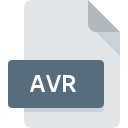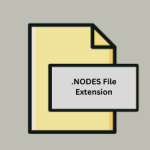.MPDP File Extension

MixPad Project File
| Developer | NCH Software |
| Popularity | |
| Category | Audio Files |
| Format | .MPDP |
| Cross Platform | Update Soon |
What is an MPDP file?
The .MPDP file extension represents a project file created by MixPad, an audio mixing software developed by NCH Software.
These files are essentially project files, containing a plethora of audio tracks, mixing settings, and other project-specific information.
Users of MixPad utilize .MPDP files to save their work in progress, allowing them to return to their audio mixing projects at any time.
More Information.
MixPad was developed with the goal of offering a streamlined and intuitive audio mixing solution. The introduction of the .MPDP file extension was a significant step towards achieving this goal.
.MPDP files were designed to encapsulate all the data associated with a MixPad project, including audio clips, volume levels, pan settings, and effects.
The primary purpose of this file format was to provide a reliable way to save and reopen audio projects, ensuring that no data was lost between sessions.
Origin Of This File.
.MPDP files originate from MixPad, a multi-track mixing and recording studio software that provides professional-quality audio production capabilities.
MixPad supports a wide range of audio formats, and .MPDP is its proprietary project file format. NCH Software, the company behind MixPad, introduced this file format to provide a dedicated, robust, and efficient way for users to manage their MixPad projects.
File Structure Technical Specification.
.MPDP files are structured in a way that optimally stores various types of data integral to audio projects. The file structure typically includes:
- Header Information: Contains metadata about the project, such as the MixPad version used to create the file, project title, and other relevant details.
- Track Data: Each track within the project is represented, containing references to audio files, volume and pan settings, and applied effects.
- Mixer Settings: Information about the overall mixing setup, including master volume and equalizer settings.
The .MPDP files are binary, meaning they are not meant to be edited or read in a text editor. They are specifically structured for efficient processing by the MixPad software.
How to Convert the File?
Converting a .MPDP (MixPad Project File) to other audio formats is a process typically done within the MixPad software itself. Here’s a step-by-step guide on how to convert a .MPDP file to a more common audio format like MP3 or WAV:
Step 1: Open the Project in MixPad:
- Launch MixPad: Start the MixPad application on your computer.
- Open the .MPDP File: Go to ‘File’ > ‘Open’ and select the .MPDP file you want to convert.
Step 2: Prepare the Project for Export:
- Review the Project: Once the file is open, check your tracks and make any final adjustments needed. This might include tweaking volume levels, applying effects, or arranging tracks.
- Select the Tracks: If you don’t want to export the entire project, select the specific tracks you wish to convert.
Step 3: Export the Project:
- Access the Export Feature: Click on ‘File’ in the menu, then choose ‘Export’ or ‘Export Project As’.
- Choose the Export Format: In the export window, you’ll have options to choose the format for your audio file. Common formats include MP3, WAV, FLAC, and AAC. Select the one that fits your needs.
- Set the Quality: Depending on the format you choose, you might have options to set the quality of the output file. For instance, with MP3, you can select the bitrate.
- Name and Save the File: Choose a location to save your file, enter a file name, and click ‘Save’ or ‘Export’.
Step 4: Wait for the Conversion:
- The software will process the project and convert it into the selected audio format. The time it takes depends on the size and complexity of your project.
Step 5: Access the Converted File:
- Once the export process is complete, you can access the converted file in the location where you chose to save it.
Advantages And Disadvantages.
Advantage:
- Comprehensive Project Saving: .MPDP files allow users to save every aspect of their project, ensuring no loss of data.
- Efficiency: These files are optimized for quick loading and saving within MixPad, making the workflow smooth and uninterrupted.
- Compatibility: .MPDP is a proprietary format of MixPad, ensuring perfect compatibility and functionality within the software.
Disadvantage:
- Limited Software Compatibility: Being a proprietary format, .MPDP files can mainly be opened and edited with MixPad, limiting cross-software compatibility.
- Binary Format: The binary nature of .MPDP files means they are not human-readable and require MixPad for any meaningful interaction.
How to Open MPDP?
Open In Windows
- Install MixPad: Download and install MixPad Audio Editor from the NCH Software website.
- Locate the .MPDP File: Find the .MPDP file you wish to open.
- Open the File: Right-click on the .MPDP file and select ‘Open with’. Choose MixPad from the list of applications. If MixPad is not listed, browse for the MixPad application executable.
Open In Linux
- Install Wine: Install Wine on your Linux system.
- Install MixPad Using Wine: Download the Windows version of MixPad and install it using Wine.
- Open the .MPDP File: Use the MixPad installed through Wine to open your .MPDP file.
Open In MAC
- Install MixPad for Mac: Download and install MixPad Audio Editor for Mac from the NCH Software website.
- Open the .MPDP File: Double-click on the .MPDP file or right-click and select ‘Open with’, then choose MixPad.
Open In Android
- Convert File on Computer: Use MixPad on a desktop to export the .MPDP file to a format like MP3 or WAV.
- Transfer to Android: Connect your device to the computer, copy the converted file, then disconnect.
- Play File on Android: Use any audio player app to play the transferred audio file.
Open In IOS
- Convert File on Computer: Open the .MPDP file with MixPad on a desktop and export it to a compatible audio format.
- Sync to iOS via iTunes/Finder: Connect your iOS device, then use iTunes or Finder to sync the converted audio file.
- Play File on iOS: Access and play the file using the Music app or another audio player on your device.
Open in Others
- Use a Compatibility Layer or Emulator: If a compatibility layer or emulator is available for the specific OS, you can try running the Windows version of MixPad through it.
- Export to Compatible Format: Alternatively, you can export the MixPad project to a universally compatible audio format (like MP3 or WAV) on a supported OS and then transfer and open that audio file on your device or different operating system.













